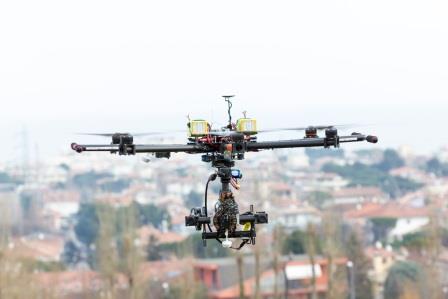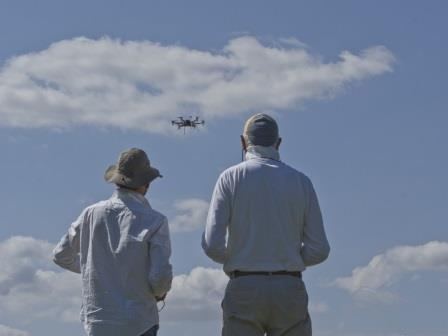

In this Edition
Construction
Management Specialists
111 Pine Street, Suite 1315
San Francisco, CA 94111
(415) 981-9430 (San Francisco office)
1663 Eureka Road
Roseville, CA 95661
(916) 742-1770 (Sacramento office)
9449 Balboa Avenue, Suite 270
San Diego, CA 92123
(619) 518-5648 (San Diego office)
8538 173rd Avenue NE
Redmond, WA 98052
(206) 571-0128 (Seattle office)
2063 Grant Road
Los Altos, CA 94024
(650) 386-1728 (South Bay office)
9705 Cymbal Drive
Vienna, VA 22182
(703) 268-0852 (Washington, DC office)
www.TBDconsultants.com
By the time you see this newsletter the FAA should be on the verge of publishing the regulations that will govern the commercial use of drones, or UAVs (Unmanned Aerial Vehicles). Currently, only a limited number of commercial companies have been granted a permit for their use, and then they are officially only allowed to operate under similar rules to those applying to model aircraft. Under those same rules, hobbyists are free to fly them as much as they like, and companies that operate abroad have been able to use them legally outside the US.

Drones have been finding a number of uses in the construction industry. The obvious use is in providing aerial photography of sites and recording construction progress. It is also possible for drones to carry out detailed mapping of sites including 3D imaging. Surveys that might have taken weeks can now be completed in a matter of hours. They can also collect samples, if suitably equipped. Drones are additionally ideal for carrying out visual inspection and safety checks of roofs and exterior walls of buildings, bridges, or power lines, etc. Regarding the latter, drones have also been fitted with infrared cameras, which can assist in identifying hot spots on the power line that might be nearing failure. Lastly, drones have the potential for lifting materials and equipment to less accessible locations.
The FAA rules currently applying to drones prohibit them from operating above four hundred feet, require that the operator have a direct line of sight to the drone, limit the drone to a weight of no more than 55 lbs, and include other safety restrictions. The companies that operate the drones are hoping for a relaxation of some of these restrictions, but the FAA cannot be faulted too much for playing it safe. There have already been over 200 reports of drones flying uncomfortably close to manned aircraft. Not to mention other interesting accidents such as the drone that was filming a wedding and crashed into the groom.

Efforts are being made to lessen the likelihood of drones colliding with aircraft or other objects (such as bridegrooms). Control software is available for manned aircraft to identify potential collisions, but the required computers and other equipment would be too heavy for most drones. Efforts at using neural hardware for object tracking and avoidance are looking promising. Neural hardware works in a similar fashion to the human brain, rather than a traditional PC.
There have also been privacy concerns, and security ones (we have had two drones landing on the White House lawn already, and someone landed a drone on the roof of the Japanese prime minister’s office in central Tokyo) But these concerns are being addressed. There are already systems available that can locate drones in the area, by listening for the distinctive sound of their motors or tracking the radio signals used to control them. There have also been methods devised to capture a drone that shouldn’t be there, using another drone to catch it, of course. One drone manufacturer has started building in software that will stop the drone from encroaching on restricted areas, such as the White House lawn and the controlled airspace around airports. It would not be surprising to find legislation requiring that such controls be built in.
The development of open-source software for the control of drones and the processing of the information that they collect is being furthered by the umbrella organization known as Dronecode (launched by the Linux Foundation), and with the price of drones dropping dramatically, we can expect to be seeing a lot more of them buzzing around soon.
The slowdown in the Chinese market led to a record points drop in the Dow, and here we look at the implications of this and other worldwide events on the US market.
The construction cost of a new building, or a building upgrade, is a substantial investment, but it can pale in significance when compared with other costs incurred during the life of the building. Here we take a look at a procedure for including these life-cycle costs when assessing the value of a construction project.
Design consultant: Katie Levine of Vallance, Inc.